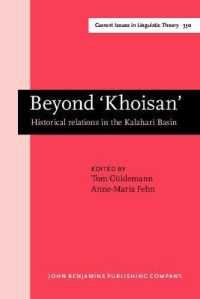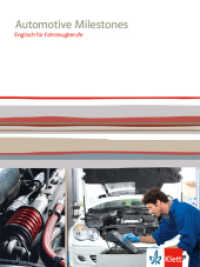- ホーム
- > 洋書
- > 英文書
- > Literary Criticism
Full Description
A matter-based approach to the study of nineteenth-century Romantic artifacts centering on the removal of the Parthenon sculptures from Athens, Greece by Thomas Bruce, the 7th Earl of Elgin, and sale of the prized artifacts to the British Parliament for £35,000 in 1816.
Dewey W. Hall delves into the intrigue surrounding the famed sculptures by reaching back in time to Democritus (460-370 B.C.), Aristotle (384-322 B.C.), and Epicurus (341-271 B.C.) who theorized about the atom—the basis for the materialist tradition—and Lucretius's notion of the swerve in De Rerum Natura (Of the Nature of Things) (c. 55-49 B.C.). This study includes various artistic responses to the Parthenon sculptures via the verbal and visual as represented through George Gordon, Lord Byron's Curse of Minerva (1811) and Childe Harold's Pilgrimage (1812), Benjamin Robert Haydon's sketches of the horse of Selene (1809) held at the British Museum, and John Keats's Endymion (1818) and "Ode on a Grecian Urn" (1819).
Contents
List of Figures
Acknowledgements
About the Author
Introduction: On the Question of Matter
1. Marble as Material Form: Geology, Quarrying, and Provenance
2. Shared Abjection: The Case of Elgin and Byron
3. A Materialist Approach to the Parthenon Sculptures: Subject, Object, and Thing
4. The Political Ecology of Matter: Marbles, Volcanoes, and Humans
Afterword: The Parthenon of the North
Bibliography
Index








